The Pop-Up Adventure Play Days at the Maple Neighborhood Center over the summer months have been great fun. Kids of all ages have been able to engage in ‘good, old-fashioned’ play activities like digging holes, painting walls and building cardboard forts.

As we move toward establishing an ongoing Adventure Playground at Maple, we have been adding more challenging activities. Saws, hammers and nails are now more prominent. A ladder has been added to a tall tree to facilitate climbing. Kids have been signed in and dropped off by parents. All these activities are laying the ground work for us to open the Sacramento Adventure Playground for regular operation on Tuesday, August 23.

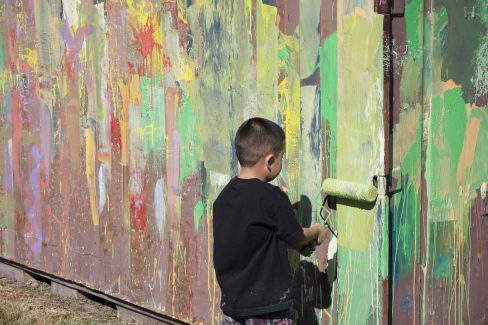
The closer we get to the opening day, the more we hear the question, “What’s the difference between the Pop-Up Adventure Play Days and the on-going Adventure Playground?”
The major difference is the age of the participants. The Adventure Playground at Maple is developed to serve children and youth ages 7 to 15 rather than children of all ages and their families. This is a big shift for Fairytale Town as we have always served young children (from birth to age 10) and their families. We are excited about the opportunity to offer playful and creative experiences for youth. The types of play at the Playground will suit older children and youth as they will involve a little more risk and creativity, and a lot less adult involvement.

Another significant difference is the introduction of tools and building supplies. Saws, hammers, nails, screwdrivers, sewing machines and such will be available for participants to use. Play workers will be on hand to make sure the participants learn how to properly use and care for the tools, but the kids will be able to create and build things they can call their own.
There are other minor differences as well…
- The Adventure Playground will be open during afterschool and weekend hours. Operating hours will be 2:30-6:30 PM Tuesdays, Wednesdays and Thursdays, and Saturdays from 11 AM to 3 PM.
- Once registered by a parent or guardian, children and youth can come and go from the Adventure Playground on their own. Parents and guardians may visit the Playground, but for observation only. They are encouraged to let their children pursue activities on their own.
- Participants can create—and destroy—things over time, rather than in a one-day time-frame.
And, of course, much is the same…
- The Adventure Playground will be free to those who register.
- Participants will get messy and are encouraged to wear clothes and shoes that can get dirty. (In fact, closed-toe shoes are required.)
- The Playground will continue to hold regular Pop-Up Days for the community—at both Maple Neighborhood Center and other locations around town!
Around the world, Adventure Playgrounds tend to become places the participants call their own; and we hope the Sacramento Adventure Playground at Maple does as well.
Learn more about the Sacramento Adventure Playground at the Playground’s website.








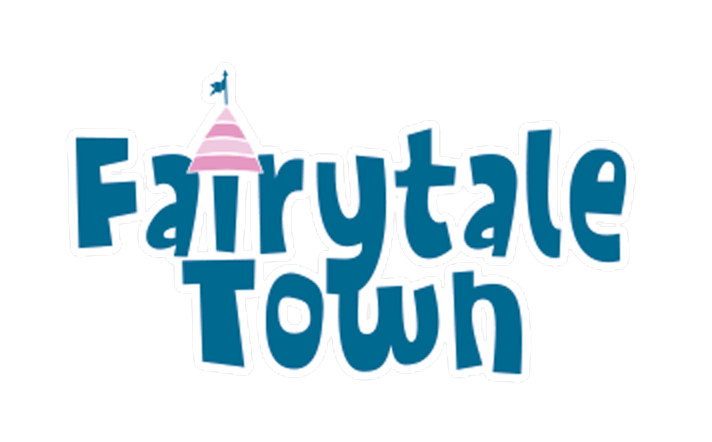
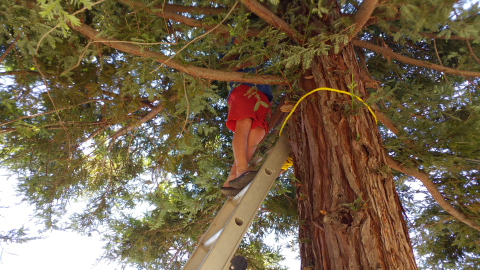 Fairytale Town and the Sacramento Play Coalition hosted their third Pop-Up Adventure Play Day at the Maple Neighborhood Center last weekend. The quote of the day happed when a 7-year old girl scampered up a ladder into a tree. Surprised by her quick ascent, her father said, “I didn’t know you liked to climb trees,” to which his daughter replied, “That’s because you don’t let me climb them at home.”
Fairytale Town and the Sacramento Play Coalition hosted their third Pop-Up Adventure Play Day at the Maple Neighborhood Center last weekend. The quote of the day happed when a 7-year old girl scampered up a ladder into a tree. Surprised by her quick ascent, her father said, “I didn’t know you liked to climb trees,” to which his daughter replied, “That’s because you don’t let me climb them at home.”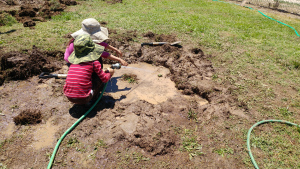 Of course, risky play needs to be managed and have oversight, and that’s where organizations like Fairytale Town can step in. Recognizing the need for broader play activities, especially for older children, Fairytale Town is working to bring a permanent Adventure Playground to the Maple Neighborhood Center. Thanks to involvement from volunteer groups like the Sacramento Play Coalition, Men in Childhood and other nonprofit organizations, we are nearly there.
Of course, risky play needs to be managed and have oversight, and that’s where organizations like Fairytale Town can step in. Recognizing the need for broader play activities, especially for older children, Fairytale Town is working to bring a permanent Adventure Playground to the Maple Neighborhood Center. Thanks to involvement from volunteer groups like the Sacramento Play Coalition, Men in Childhood and other nonprofit organizations, we are nearly there. Details on the difference between the Pop Up Adventure Play Days and the permanent
Details on the difference between the Pop Up Adventure Play Days and the permanent 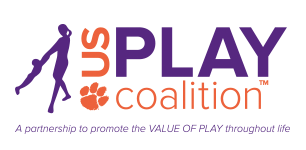 It was another whirlwind trip. It seemed like I just returned from the Play on the Move conference in New Jersey when I took off for the
It was another whirlwind trip. It seemed like I just returned from the Play on the Move conference in New Jersey when I took off for the 

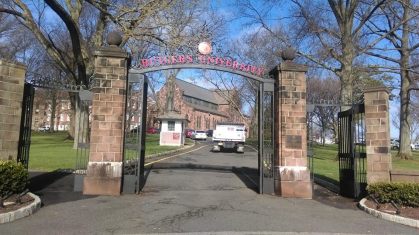 Play on the Move was the theme of this year’s conference for
Play on the Move was the theme of this year’s conference for 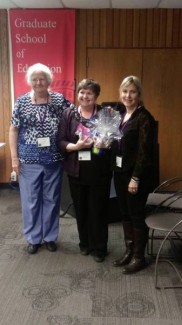 That evening I participated in my very first board meeting for the USA chapter of the
That evening I participated in my very first board meeting for the USA chapter of the  Nearly 200 people played away the day at the first-ever Pop-Up Adventure Play Day in Sacramento. Held at the Maple Neighborhood Center in south Sacramento, the effort was a collaboration between Fairytale Town and the Sacramento Play Coalition – and was months in the planning.
Nearly 200 people played away the day at the first-ever Pop-Up Adventure Play Day in Sacramento. Held at the Maple Neighborhood Center in south Sacramento, the effort was a collaboration between Fairytale Town and the Sacramento Play Coalition – and was months in the planning.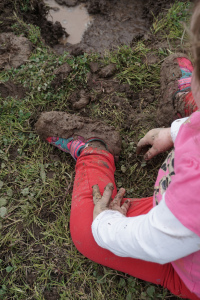 We were uncertain how the day would go. We thought it would be a good turn out if we had 20 people show up. We secretly hoped for 100.
We were uncertain how the day would go. We thought it would be a good turn out if we had 20 people show up. We secretly hoped for 100.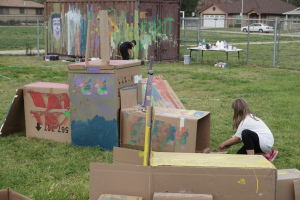 A 7-year-old boy spent his time turning cardboard boxes into a helicopter—again with the help of a play-worker.
A 7-year-old boy spent his time turning cardboard boxes into a helicopter—again with the help of a play-worker. Nearly everyone spent time painting the large storage container. Some were able to spray the sides with a paint-filled water pistol.
Nearly everyone spent time painting the large storage container. Some were able to spray the sides with a paint-filled water pistol. Adventure playgrounds harken back to the end of WW2 when European landscape architects and playground designers discovered that children enjoyed playing in the war rubble more than they did in pre-fab playground structures. They observed that children were more engaged in play in spaces they created themselves and thought that these non-traditional environments inspired imaginative, collaborative and thoughtful play, and helped build competencies for adulthood.
Adventure playgrounds harken back to the end of WW2 when European landscape architects and playground designers discovered that children enjoyed playing in the war rubble more than they did in pre-fab playground structures. They observed that children were more engaged in play in spaces they created themselves and thought that these non-traditional environments inspired imaginative, collaborative and thoughtful play, and helped build competencies for adulthood.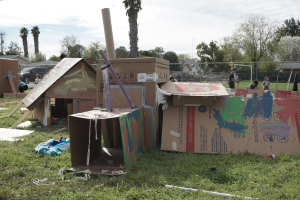 The Maple Neighborhood Center, located on the former site of Maple Elementary School, is a hub of health services, programs and opportunities for children and families presented by La Familia Family Counseling Center, 916 Ink, Fairytale Town and more nonprofit partners.
The Maple Neighborhood Center, located on the former site of Maple Elementary School, is a hub of health services, programs and opportunities for children and families presented by La Familia Family Counseling Center, 916 Ink, Fairytale Town and more nonprofit partners.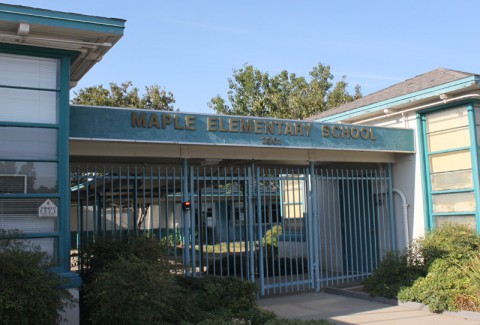
 It was almost closing time and I was walking towards my office. I saw a family playing by King Arthur’s Castle. The adults were chatting happily, the children swirling around them. The sheep at the Mary’s Little Lamb exhibit across the walkway began to bleat. They knew they would be fed soon. As I was nearing the sheep, a little girl form the family ran up to them announcing to me, “I speak sheep!” and baah-ing to her animal friends. It was a joy to see the strength and self-confidence she displayed in this spontaneous moment of playful interaction. She transcended the language barriers and became one with the sheep, both of them baah-ing back and forth until they each rushed off – the sheep to eat their dinner, the child to rejoin her family.
It was almost closing time and I was walking towards my office. I saw a family playing by King Arthur’s Castle. The adults were chatting happily, the children swirling around them. The sheep at the Mary’s Little Lamb exhibit across the walkway began to bleat. They knew they would be fed soon. As I was nearing the sheep, a little girl form the family ran up to them announcing to me, “I speak sheep!” and baah-ing to her animal friends. It was a joy to see the strength and self-confidence she displayed in this spontaneous moment of playful interaction. She transcended the language barriers and became one with the sheep, both of them baah-ing back and forth until they each rushed off – the sheep to eat their dinner, the child to rejoin her family.



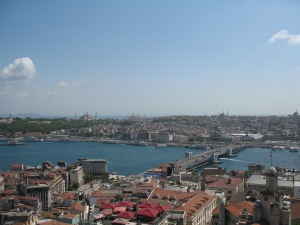
 March is Read Aloud Month. To help celebrate, Fairytale Town has become a partner with the
March is Read Aloud Month. To help celebrate, Fairytale Town has become a partner with the